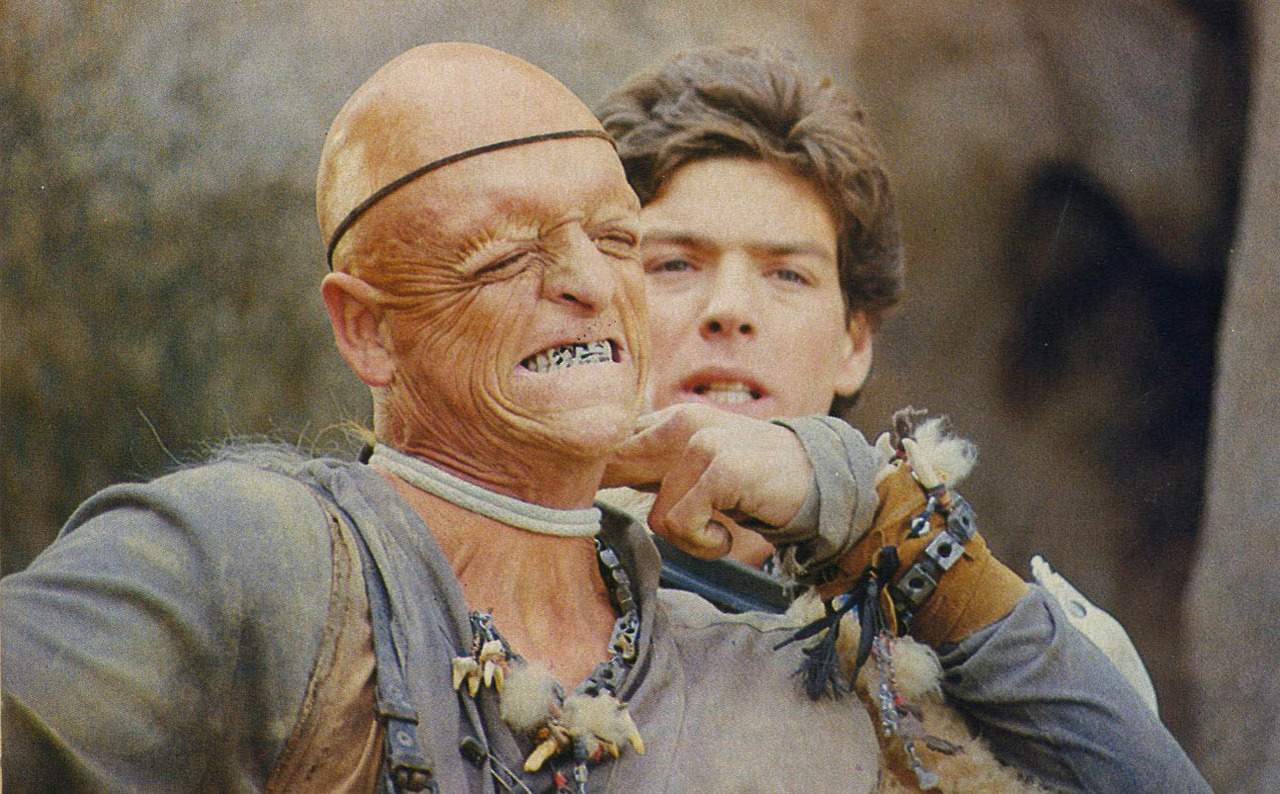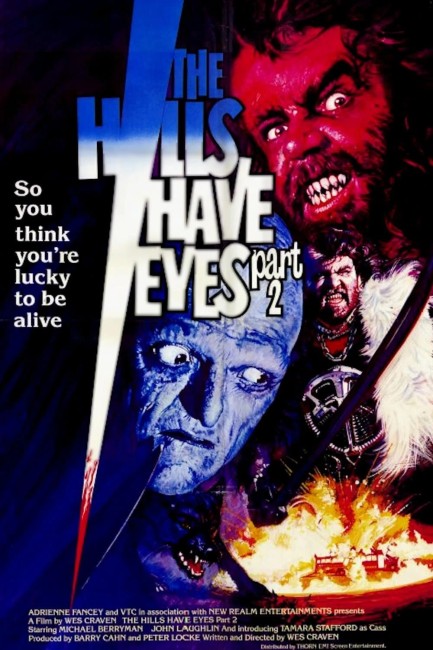USA. 1985.
Crew
Director/Screenplay – Wes Craven, Producers – Barry Cahn & Peter Locke, Photography – David Lewis, Music – Harry Manfredini, Makeup – Ken Horn, Production Design – Dominick Bruno. Production Company – VC/New Realm Entertainment/Adrienne Ferry.
Cast
Janus Blythe (Ruby/Rachel Carter), Tamara Stafford (Cassandra), Michael Berryman (Pluto), Willard Pugh (Foster), Colleen Riley (Jane), Penny Johnson (Sue), Peter Frechette (Harry), John Laughlin (Hook), John Bloom (Reaper), Robert Houston (Bobby Carter)
Plot
It is five years after the events in the desert. Bobby, the sole survivor, has married Ruby, the hill girl who helped save him. She now calls herself Rachel and together they manage a Yamaha dealership. She accompanies a group of riders to a motocross trackmeet but the bus breaks down in the desert near her family’s old hunting ground. As they search for help, the two surviving members of the family close in and begin picking their numbers off.
Wes Craven’s The Hills Have Eyes (1977) was one of the celebrated classics of the Backwoods Brutality genre of the 1970s. From there, Wes Craven went onto mainstream success like A Nightmare on Elm Street (1984), which propelled him to the forefront of the genre from the late 1980s onwards. The mid-1980s were certainly an erratic era for Wes Craven – it is hard to believe someone who could make a classic like A Nightmare on Elm Street could follow it up with turkeys like this and Deadly Friend (1986).
Wes Craven blames many of the problems with The Hills Have Eyes Part II‘s on a hurried shooting schedule so perhaps he can be forgiven. (Alas, other films Craven made during this era such as Deadly Friend and Shocker (1989) do not have these excuses). The plot is depressingly routine. The brutal survivalism of the first film has been reduced to hackneyed Friday the 13th (1980)-styled slice-and-dice. The plot is a mess – after setting Janus Blythe from the first film up for all sorts of confrontations, Craven then summarily dispatches her. She fails to go back and confront her family and is not even the one who faces off against them at the end. Robert Houston returns as Bobby but is written out within the first few scenes.

Still, being a Wes Craven film, The Hills Have Eyes Part II is not without certain merits – the character of the blind psychic Cass is good, particularly so one scene with her moving through the grisly charnel house unawares. Although, as is the case with Ruby, the film fails to do anything interesting with her as a character or her powers. Craven does a decent job in generating suspense during some of the attack scenes.
The Wes Craven-produced Mind Ripper (1995) purportedly started out as a third Hills Have Eyes film, although the finished product is not related. The Hills Have Eyes was later remade as The Hills Have Eyes (2006). The remake was successful enough to spawn its own sequel, also entitled The Hills Have Eyes II (2007), although that had a different plot to this film.
Wes Craven’s other films are:- The Last House on the Left (1972), Summer of Fear/Stranger in Our House (1978), Deadly Blessing (1981), Swamp Thing (1982), Invitation to Hell (tv movie, 1984), A Nightmare on Elm Street (1984), Chiller (tv movie, 1985), Deadly Friend (1986), The Serpent and the Rainbow (1988), Shocker (1989), Night Visions (tv movie, 1990), The People Under the Stairs (1991), Wes Craven’s New Nightmare (1994), Vampire in Brooklyn (1995), Scream (1996) Scream 2 (1997), Scream 3 (2000), Cursed (2005), My Soul to Take (2010) and Scre4m/Scream 4 (2011). Wes Craven has also written the scripts for A Nightmare on Elm Street III: The Dream Warriors (1987), Pulse (2006) and The Hills Have Eyes II, and produced Wishmaster (1997), Carnival of Souls (1998), Don’t Look Down (1998), Dracula 2000 (2000), Feast (2006), The Breed (2006), The Hills Have Eyes (2006), The Last House on the Left (2009), The Girl in the Photographs (2015) and the tv series Scream: The Series (2015-9). He also created the tv series The People Next Door (1989) and Nightmare Cafe (1992).
Trailer here

